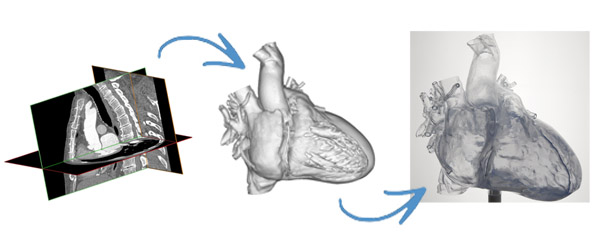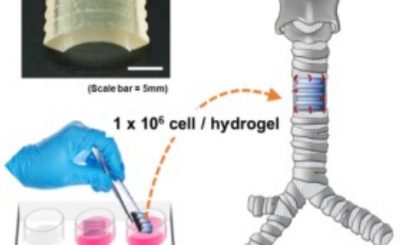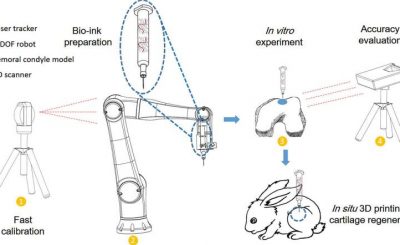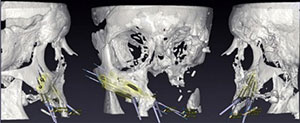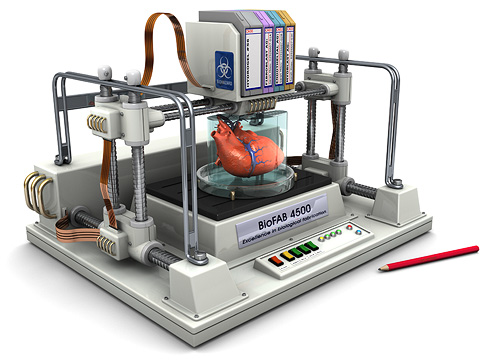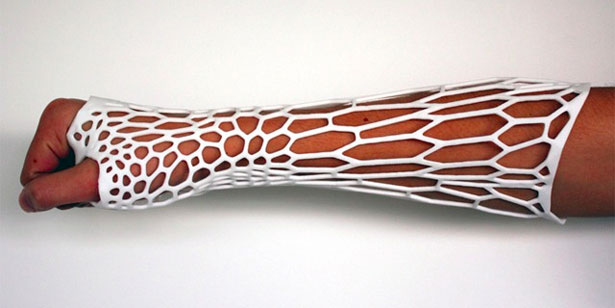This was may day so far: I wrote about an amazing new development in the adoption of 3D printing for surgery in Italy, an incredible 
All of my relatives that work in the medical or scientific field are very quick to “crush” my arguments when I ask them about the possibility of 3D printing functional organs, saying that there is no way to replicate an organ’s complex, multicellular structure. I consider these relatives to be extremely knowledgeable and reliable, but they are mostly doctors and/or researchers who are not directly familiar with additive manufacturing technologies.
On the other hand, 3D Bioprinting Solution’s enthusiasm, as with any other 3D bioprinting venture, is contagious and I know from experience that, with 3D printing nothing is impossible, and nothing can be entirely discarded. The truth probably lies somewhere in the middle: bioprinting complex organs is an extremely difficult feat to achieve, but, sooner or later, it will be done. And 3D Bioprinting Solutions may be the company to do it.
 Readers of 3DPI are likely well-aware of the recent announcement by 3D Bioprinting Solutions of
Readers of 3DPI are likely well-aware of the recent announcement by 3D Bioprinting Solutions of  One area of their strategy begins with the fact that the thyroid gland has a relatively simple structure and it was the first organ transplanted into a human. Furthermore, according to the WHO, there are currently 665 million people worldwide suffering from abnormalities of the thyroid gland, some of which are caused by cancer and, thus, cannot be treated with medication. According to some surgeons and oncologists, bioprinting organs may be the only acceptable way to provide, not only a decent standard of living for their patients, but also extended lifespans. The other motivator driving their strategy is that 3D Bio considers bioprinting of organs to be “the great scientific achievement possible in the 21st Century.”
One area of their strategy begins with the fact that the thyroid gland has a relatively simple structure and it was the first organ transplanted into a human. Furthermore, according to the WHO, there are currently 665 million people worldwide suffering from abnormalities of the thyroid gland, some of which are caused by cancer and, thus, cannot be treated with medication. According to some surgeons and oncologists, bioprinting organs may be the only acceptable way to provide, not only a decent standard of living for their patients, but also extended lifespans. The other motivator driving their strategy is that 3D Bio considers bioprinting of organs to be “the great scientific achievement possible in the 21st Century.”
Elena Bulanova, head of cell technology research laboratory at 3D Bioprinting Solutions said that the team is already working on the second stage of the research: evaluation of the functionality of the printed mouse thyroid gland construct. “During one month, we will observe if the original thyroid gland really stops functioning. We will then analyze thyroxine production, as it must decrease dramatically after suppressing the thyroid’s functions,” she said. “Then we will implant our construct. It is planned for use in a total of 12 animals: 6 control mice with no implant and 6 mice with a construct implant. We will give 1 month for the implant to survive and start functioning. We will implant the [thyroid construct] under renal capsule to avoid immune response issues. In a month after implantation, we will test the thyroxine levels; they should be back to normal. This way, the printed construct will functionally completely replace the original thyroid gland of the mouse.”
If that yields positive results, it will be time to consider human testing. 3D Bio intends to start working on bioassembling a human thyroid organoid as soon as they receive the functional human thyroid epithelial cells generated by their collaborators, using human IPC cells. And, since we were venturing into the realm of possibilities, I also asked what would come next. Mironov did not hesitate to say that the next challenge would be another human organ “according to [their] company internal plan.” The long-term objective is already public: bioprinting a human kidney. “Sooner or later, the sooner the better, of course”, Mironov said.

He truly believes that this is possible and not only the bioprinting of kidneys. Prof. Takebe from Yokohama City University in Japan, he says, intends to generate a human liver and transplant the organ into a human by 2019. The major goals to reach, as explained by Prof Takebe, are obtaining a sufficient amount of clinically relevant therapeutic grade cells, the creation of scalable automated and robotised GMP (Good Manufacturing Practices) facilities, and a high percentage of successful engraftment (vascularization, viability, and so on). The heart is also on the list, and the leading expert working on this task is Dr. Stuart Williams, of the University of Louisville Cardiovascular Innovation Institute. As Mironov clearly states, if scientists abandon the idea that they need a polymer scaffold to on which to bioprint the tissues, then “everything is bioprintable”.
At this point, to ask the doctor about cartilaginous structures seemed almost anti-climactic. However, Dr. Mironov also mentioned several studies underway in this area, as well as the printing of pancreatic cells, which would possibly provide a way to cure diabetes down the line. “Prof. Douglas Melton from Harvard University is an expert in insulin producing docile pancreatic cells,” he said. “He claimed that he has already developed a protocol for the generation of beta cell endocrine cells producing insulin from human IPC cells. I believe,” Mironov concluded, “that we will observe some results in this field it in the nearest future.”
I really want to believe everything Dr. Mironov says and the confidence with which he says it makes it all so much easier. As you can guess, this is one story that we are definitely going to follow-up on.
